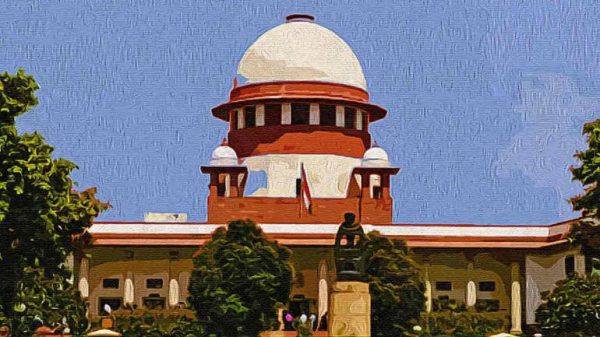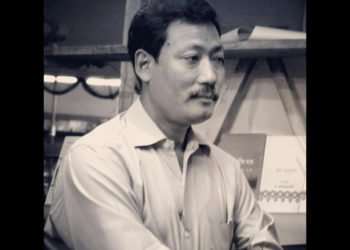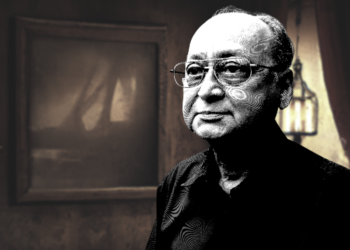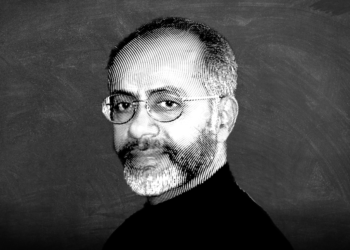In a pair of lucid and informative videos – one from before the Supreme Court’s hearing of January 22, and the other directly after – Prof Faizan Mustafa explains the present legal position and likely course ahead, as 142 petitions against the CAA (and two for it) have their day in court. We bring you a translated summary of his presentation.


Here’s a quick recap of the timeline so far: the CAB cleared parliament on December 11, and was signed into law the following day by the President. December 19 was the day of the first hearing in the case, when the Supreme Court issued a notice to the government asking it to respond to petitions received by the court. The three-judge bench that day included justices B.R. Gavai and Surya Kant; this time, it is the chief justice, S.A. Bobde, along with justices S. Abdul Nazeer and Sanjiv Khanna. Meanwhile, on January 10, the Citizenship (Amendment) Act was notified by the government, thereby officially coming into force.
At the December 19 hearing, some lawyers (such as Rajeev Dhawan) from among the petitioners had made the case that since the CAA was yet to be enforced, it was pointless asking for a stay on it. But now that the law is in force, the demand for a stay becomes pertinent.
Faizan Mustafa cites an article he and Aymen Mohammed wrote for The Hindu (January 21, which may be read here) where they argue that “the great Indian citizenship mess” of today is largely of the Supreme Court’s own making. In its judgement of the Sarbananda Sonowal case (2005) the court had struck down the earlier
Assam-specific Act that had put the burden of proof on the State rather than on the person alleged to be a foreigner. Without providing any evidence, the court went on to say that “unabated influx of illegal migrants from Bangladesh into Assam [had] led to a perceptible change in the demographic pattern of the State and reduced the Assamese people to a minority in their own State.” The National Register of Citizens (NRC), monitored by the Supreme Court itself, has proved these fears to be exaggerated. Even if all the 19 lakh excluded people are considered “illegal migrants”, they constitute a mere four per cent of Assam’s population.
With the entire country now anxious about furnishing proof of citizenship, lawyers may choose to argue that the Supreme Court is responsible for the situation, since the court had directed the NRC process in Assam. There, millions of people had to present themselves before tribunals that functioned like kangaroo courts: serving notices on entire villages at a time, declaring as non-citizens individuals whose cases were not before the tribunals in the first place, passing orders in cases where no judgement existed in the file; while other instances emerged of the government extending the term of tribunal judges based on their success rate in declaring applicants as foreigners. (For more details on the cruelty and arbitrariness of the tribunals see our report here.) Today, when the country is plunged into uncertainty and women are out protesting in the streets, the Supreme Court’s Sonowal judgement has a lot to do with it. The language it used against “illegal migrants” was harsh, almost xenophobic, and the court relied completely on the report of the then governor, S.K. Sinha, a document that was not based on any authentic empirical research. The court took the report at face value, even though the Vajpayee government was gone by 2005 and Manmohan Singh’s government had filed a new affidavit in the case.
Also Read: Faizan Mustafa: Which documents will be required for the NRIC?
Sonowal, today chief minister of Assam, had gone to court against the Illegal Migrant (Determination) Act of 1983 – passed by the Indira Gandhi government – which placed the onus of proof on the government if it doubted anyone’s citizenship. The court responded favourably to Sonowal’s contention, and the tribunals went on to function in accordance with the Foreigners Act of 1946, which placed the burden of proof on the individual whose citizenship was in question. Further, the Supreme Court quoted authors who had a clear bias, and its statements spoke of the Assamese people as reduced “to a minority in their own State”. This was a false narrative: that crores upon crores of Bangladeshis had entered Assam. What we see today are 19 lakh people excluded from the NRC, in highly questionable circumstances. Even the BJP says the number is wrong, that a good 13 lakh of these people are bona fide citizens. If, for argument’s sake, we accept the number of 19 lakh, that’s far from enough people to decide election results or place an insupportable burden on Assam’s resources.
The Supreme Court had also said that the IMDT law was territory specific (to Assam) and such a law had a point only so far as it was effective in achieving its object, i.e., stopping the infiltration of foreigners. Showing little understanding of the circumstances in which migration occurs, the court equated it with external aggression – an attack on India – and made out that the immigrants were Islamic fundamentalists. Today, we can see that the court’s pronouncements were not empirically sound and the bulk of these people are not even Muslim. They’re Hindus, in support of whom the CAA has now been enacted. The government says the law will benefit crores of people, while the Supreme Court has said that a law that favours illegal migrants is unconstitutional; this contradiction will be tested in court. The declared humanitarian intention of the law, that it will aid people who suffer under religious persecution in Afghanistan, Pakistan and Bangladesh, will also be tested. Is this persecution to be taken less seriously if the refugees enter territories that are part of the ‘inner line permit’? Will they get citizenship in Bangalore but not Kohima? The territory-specific law contradicts the Supreme Court’s position in the Sonowal judgement.
The benchmark to test the legitimacy of a law is to ask if parliament has the authority to legislate on the subject. Here is a subject on which parliament alone has the right to make laws. That the CAA is within the jurisdiction of parliament has been answered, and is not in dispute. The next question is, does the law violate any fundamental rights. Petitioners argue that the law is iniquitous. For one, its classification does not include all our neighbouring countries. Among those included, Afghanistan was never partitioned from India. Nor are all persecuted communities covered in the countries it includes. Thus, it is a violation of Article 14 (right to equality). The government will argue that it has the right to make policy decisions and to choose the areas or subjects they cover. Further, that Muslims cannot be regarded as a persecuted minority in Muslim countries. It is up to the court to see which argument it accepts; the judgement cannot be predicted. There are three possible outcomes. The least likely one is that the court clears the law and dismisses the petitions. The second is that the court decides to hear the case and fixes a date for the hearings to begin. With this, we enter a process that will run for several months more, even if the same three-judge bench hears the case. The third option is to put a stay on the law pending a final decision. That would put an end to the protests taking place across the country and also be good for economic stability – unless we want to stay on the boil. If the court does this, it is also possible that the matter is shifted before a five-judge bench. The judgement will be further delayed in that case, because the five-judge bench has plenty of matters pending before it.
The position of the law is clear: when parliament or a state legislature frames a law and it is challenged in court, hearings always begin on the presumption that the law is in accordance with the Constitution. The petitioners who argue that the law is unconstitutional will have to bear the burden of proof, and show how it is so.
We now know that what happened on January 22 was somewhere between options two and three, as set out by Faizan Mustafa. In the follow-up video, he recounts the day’s proceedings and interprets them for us.
K.K. Venugopal, the attorney-general, appeared on behalf of the government and said that the court had sent the government some sixty (or so) of the 144 petitions before it. Thus, the government should receive additional time to study and respond to the petitions it had not yet seen. He sought six weeks, and was granted four. The attorney-general was right in asking for more time, but it should be added that the government has not replied to the sixty petitions for which it was granted four weeks at the last hearing of December 19. The A.G. only said that the government was ready with its reply.
From among the petitioners, Kapil Sibal argued that the matter be shifted before a five-judge constitutional bench, and, while no stay on the CAA was required for the duration, the court should declare a stay of a few months on the National Population Register process. Abhishek Manu Singhvi added that in UP rumours have been doing the rounds that the state government is compiling lists of “doubtful voters” and has sent one list to the central government, recommending citizenship for certain categories, even before the NPR rules have been formulated or announced.
Also Read: The CAA and the Surveillance State
It was a crowded day in court, and the three-judge bench announced it was giving the government four weeks to respond to the remaining petitions. Second, the bench indicated that the matter may eventually be shifted before a five-judge constitutional bench. The law says that a case involving the interpretation of the Constitution should go before a five-judge bench. However, it has been known to happen that such questions were decided by two and three-judge benches. This goes against the text of the Constitution. Third, the court said that it would not announce a stay before hearing back from the central government in four weeks.
The attorney general might have said that, given the countrywide protests we are seeing, as a responsive government we urge the court to place a stay on the CAA-NPR pending a final judgement. It would have cleared the air. Instead, the government opposed a stay, and the court did not deem it right to impose one without hearing back from the government regarding the petitions. The likelihood now is that the matter will move before a five-judge bench, and the court has said that a decision on the stay rests with that bench. The day’s proceedings also suggest the possibility – “it’s an inkling I have,” says Mustafa – that the petitions from the North-East may be segregated for a separate hearing.
The NRC just completed in Assam took March 25, 1971, as its cut-off date – and there is some anxiety in the region about a new cut-off date of December 31, 2014. Given the public sentiment favouring a separate cut-off date for the North-East, Mustafa says, “I want to emphasise that courts do not decide matters based on public demonstrations, nor should they. I had spoken of this earlier when there was an ill-advised move to inundate the chief justice and the court with letters and petitions against the CAA. The court should always render justice in light of the law, not public pressure: it is above all a court of law. Constitutional matters should be decided by following due process, not because people are waving banners at the gates.”
So, the matter rests for now with a three-judge bench, which will preside over the next hearing in four weeks’ time. From today’s hearing, it appears that the case will move before a five-judge bench. And that bench will decide on any interim order that needs to be passed.




